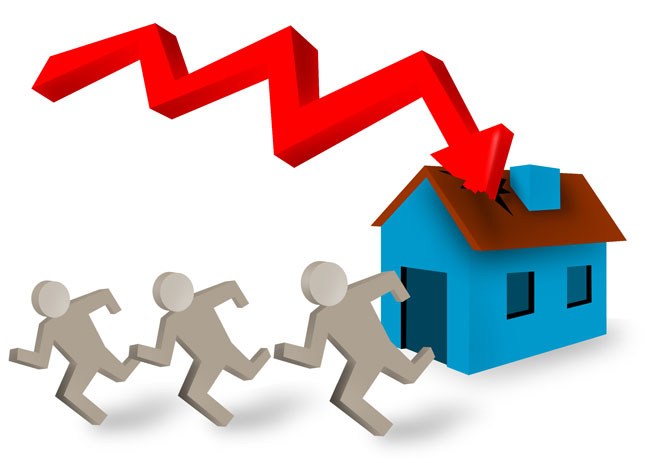There is a hidden and worrying risk lurking for a particular set of mortgage borrowers, whose level of financial stress is about to get a whole lot worse.
It’s those home owners with interest-only loans that are now increasingly under the pump – with National Australia Bank the latest of the big four to announce big hikes in rates on these types of loans.
While banks, the media and the government regularly characterise those that have interest-only loans as wealthy property investors, the fact is that there are many owner-occupiers that have used this method to finance the family home.
Ironically, regulators have pushed the banks to reduce interest-only lending to improve the overall risk of consumers’ debt to the financial system. But for those investors with interest-only loans, the chances of being unable to service them creates a new and unintended risk.
These hikes have not attracted the ire of the government, which has put the banks on notice that any move to increase mortgage rates will be intensely scrutinised. Again, because it is not seen as hitting the political heartland of the average voter with a mortgage to finance their own home.
But these borrowers are particularly vulnerable because many of them took out their interest-only loans because they didn’t have enough cash flow to repay interest and principal.
The banks have been under regulatory pressure to herd these interest-only borrowers into interest and principal loans – offering little or no fees to change over to principals, and interest rates that are now around 0.6 per cent lower.
The catch though is that monthly repayments will be higher in most cases because the borrower also needs to repay principal.
Those that can afford to switch will do so, but there will be many that will need to remain on interest-only and have to wear the rate increase.
For owner-occupiers who have an interest and principal loan, interest rates have not fallen by much in this latest round of adjustments.
National Australia Bank and Westpac customers will see their rate fall by 0.08 per cent while ANZ customers will benefit to the tune of 0.05 per cent.
It is better than nothing, but won’t have a really meaningful impact to the weekly household budget.
For banks, the positive effect of the far bigger increases on interest-only loans will significantly outweigh the negative impact of the small fall in rates on interest and principal loans.
Indeed Westpac – which has a higher proportion of interest-only loans than the others – could boost its earnings by 3.5 per cent, according to research from Macquarie. This is calculated on the basis of all other things being equal.
But Macquarie takes the view that this earnings benefit will be eroded to some degree by some customers switching to interest and principal loans – the caveat being if they can afford it.
Martin North from industry consultant Digital Finance Analytics believes that some investor/borrowers that have interest-only loans would have less incentive to switch because the tax effectiveness of this type of borrowing could be negatively affected.
Young families, investors most at risk
The bottom line is that regardless of the kind of borrower, the overall effect of this latest round of interest rate resets will be to improve bank earnings, because in aggregate borrowers will pay more.
North said the two segments most at risk for mortgage stress are younger families that are more typically first home owners that pushed their finances to get into the property market over the past couple of years and at the other end of the spectrum a more affluent group that took advantage of the rising property market and low interest rates to buy one or more investment properties.
Both North and analysts at Macquarie warn that the flow-on effects from increased rate rises even on just interest -only loans, and the potential for some to switch to interest and principal, could be damaging for the wider economy.
“The increase to IO (interest-only) loans combined with the increased likelihood of customers switching to P&I (principal and interest), in our view, will ultimately lead to further reductions in disposable incomes and put even greater pressure on highly indebted households. We estimate that a 50 basis point increase in interest rates has a 4 to 10 per cent impact on disposable income of highly indebted households.
“While it would rationally make sense for many households (particularly for owner-occupiers) to switch to P&I, …. many of these households would not have capacity to do this,’ Macquarie said in a note to clients this week.
‘Deadly combination’
In analysing the reasons for an increased level of stressed households, North noted that “the main drivers are rising mortgage rates and living costs whilst real incomes continue to fall and underemployment is on the rise. This is a deadly combination and is touching households across the country, not just in the mortgage belts.’
Against this, the incentive for banks to massage rates higher is greater than ever, given they have been hit by the Federal Government’s bank levy and this week by an additional tax from the South Australian government that many fear could be adopted by other states down the track.
On the other side of the household ledger, the lack of any real growth in wages is only exacerbating the squeeze.
A report from Cit this week that analyses the industry segments in which jobs are growing provides insight into the problem.
“Not only does Australia have an underemployment problem that has been highlighted by the monthly labour force series, but the quarterly data shows that the economy is creating mostly jobs that are below average in terms of earnings,” it said.

